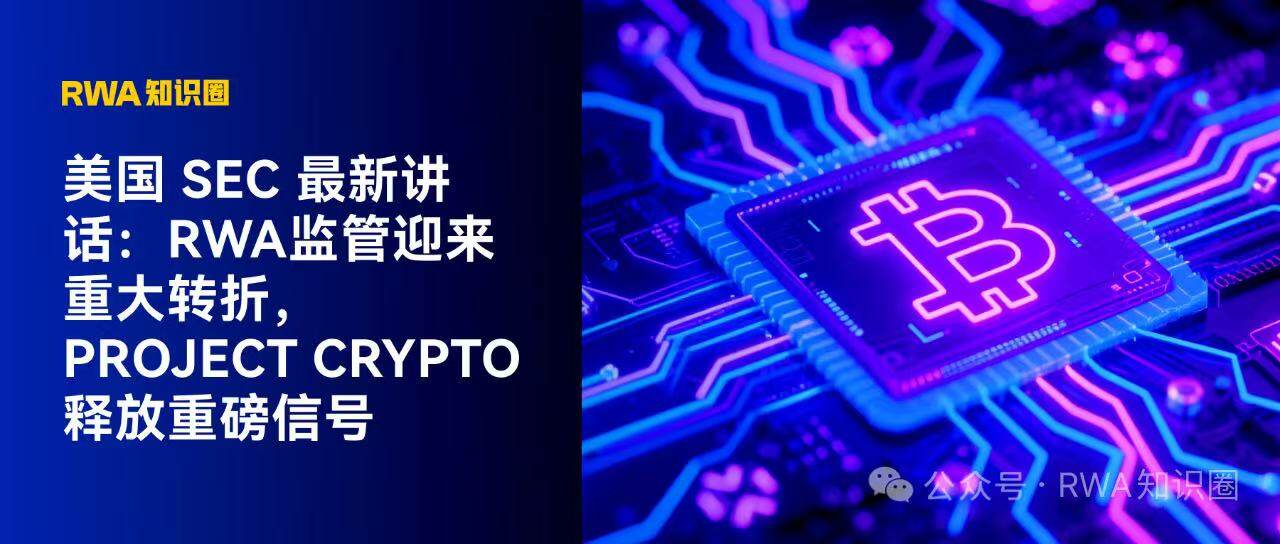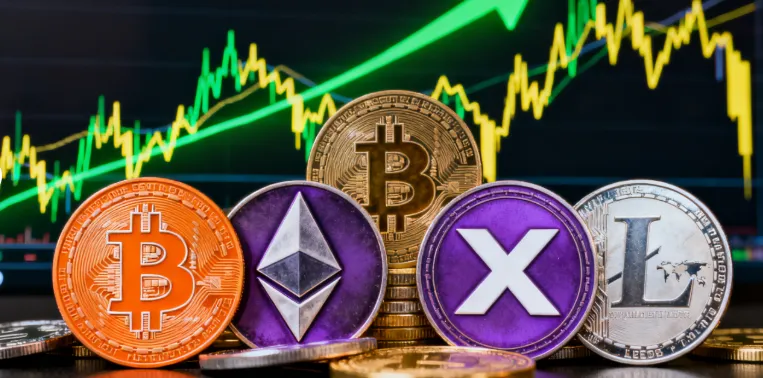Introduction:
Recently, the Chairman of the U.S. SEC delivered a speech outlining the regulatory boundaries for crypto assets, token classification, and future regulatory pathways under the "Project Crypto" framework, providing the clearest statements to date.
In particular, substantial answers were given for how RWA-related tokens are classified, whether they are considered securities, and how they will be issued in the future.
The significance of this speech lies in:
For the first time, the industry sees that RWA has a clear regulatory category, a defined exemption logic, and a compliant pathway to follow.
1. Rare Concession from the SEC: Most Cryptocurrencies Are Not Securities, RWA Receives Clear Classification
The SEC Chairman made a rare and clear statement:
"Most tokens traded today are not securities in themselves."
Tokens and investment contracts should be treated separately and no longer equated.
More importantly, this logic also applies to RWA:
Most RWA products (such as tokenized bonds, tokenized notes, tokenized asset certificates) will no longer automatically fall under the definition of securities under the new classification standards.
In the past few years, the enforcement logic of "as long as it involves financing → it is a security" has kept RWA in a regulatory shadow.
Now, "functional tokens, governance tokens, network tokens, asset certificate tokens" have seen a real pathway to "de-securitization."
The implications for RWA are very direct:
- Can be issued under a clearer framework
- Will not be permanently viewed as securities due to historical financing or on-chain circulation
- Can become on-chain financial assets recognized by institutions
In short, RWA is moving from a gray area to an era of "clear categories and compliant advancement."
2. The Core of Project Crypto is Clear Classification: Most RWA Belong to "Non-Security Tokens"
According to the speech, the new framework proposes four categories of tokens as the "new infrastructure" for regulation:
- Digital Commodities
- Digital Utilities
- Digital Collectibles
- Tokenized Securities
Among these, the first and second categories align closely with current mainstream RWA assets.
- RWA focused on "on-chain ownership proof" and "on-chain debt certificates" → belongs to digital utilities
- RWA focused on "on-chain clearing, settlement, and profit distribution" → belongs to digital commodities
This means:
The vast majority of RWA will no longer be classified as securities under this set of rules.
Only those tokenized forms that essentially belong to traditional securities (such as fund shares, stocks, bonds) will fall under the fourth category of "tokenized securities" and be subject to explicit SEC regulation.
This has led the entire industry to reach a consensus for the first time:
RWA does not equal securities, but can be categorized more reasonably based on asset nature.
3. Regulatory Boundaries Clearly Defined for the First Time: RWA No Longer Subject to "One-Size-Fits-All" SEC Jurisdiction
The speech clearly pointed out:
Non-security tokens can fall under CFTC or state regulatory systems, rather than the SEC.
The SEC will no longer view all on-chain assets as securities.
This is particularly significant for RWA:
The biggest obstacle in the past was "uncertainty," but now it is "clear classification + differentiated regulation."
The outcome for RWA is:
- Most asset-type RWA will operate under CFTC or state-level regulation
- Tokenized government bonds, funds, etc., will operate within the SEC's securities framework, with clear and predictable pathways
- The issuance, custody, and trading of RWA will have compliant boundaries
It can be said that the U.S. has formally recognized for the first time:
RWA is a mapping of multi-type assets on-chain and should be categorized rather than simply classified as securities.
This significantly alleviates the industry's pain point of "unclear regulation."
4. Global Impact: RWA, Stablecoins, and Public Chain Ecosystems Will Benefit
The shift in U.S. regulatory direction will not only affect the domestic market but will also create a ripple effect on the global crypto industry, particularly:
01 A Clearer Compliance Environment for RWA
The pathways for tokenized securities (such as government bond funds, note products, MMFs) are solidified, and regulatory positioning is clear, which is crucial for the long-term implementation of RWA.
02 Recognition of "Normal Use" for Functional Tokens
Payment tokens, network tokens, and on-chain tools will no longer automatically fall under the securities framework, facilitating the growth of real use cases.
03 Trading and Infrastructure Will Welcome a New Round of Expansion Opportunities
CEXs, DEXs, wallets, and public chains can develop under clearer rules, raising the industry's "invisible regulatory ceiling."
To put it directly:
The U.S. is shifting the crypto industry from "uncertain regulatory risks" to "regulated, compliant, and developmental" industry.
5. Conclusion: RWA Will Be a "Required Course" for Understanding the Crypto Industry in the Coming Years
As U.S. regulation begins to clarify classifications, open pathways, and acknowledge asset differences, the entire industry will shift from "speculation-driven" to "asset-driven."
Whether it is tokenized securities, on-chain settlement, stablecoin payments, or institutional-level asset migration, all will accelerate in this round of policy changes.
Therefore:
In the next 3-5 years, the true industrial value will come from RWA — from those on-chain assets with real assets, real cash flows, and real regulatory logic.
If you wish to gain a first-mover advantage in the industry changes,
Learning about RWA will be the most important cognitive investment.
免责声明:本文章仅代表作者个人观点,不代表本平台的立场和观点。本文章仅供信息分享,不构成对任何人的任何投资建议。用户与作者之间的任何争议,与本平台无关。如网页中刊载的文章或图片涉及侵权,请提供相关的权利证明和身份证明发送邮件到support@aicoin.com,本平台相关工作人员将会进行核查。





